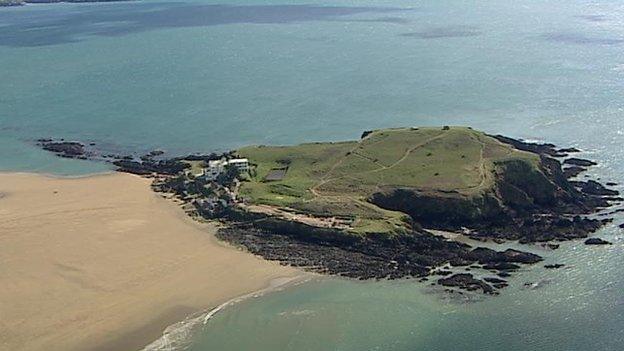Burgh Island statue 'should be pilchards not pirates'
- Published
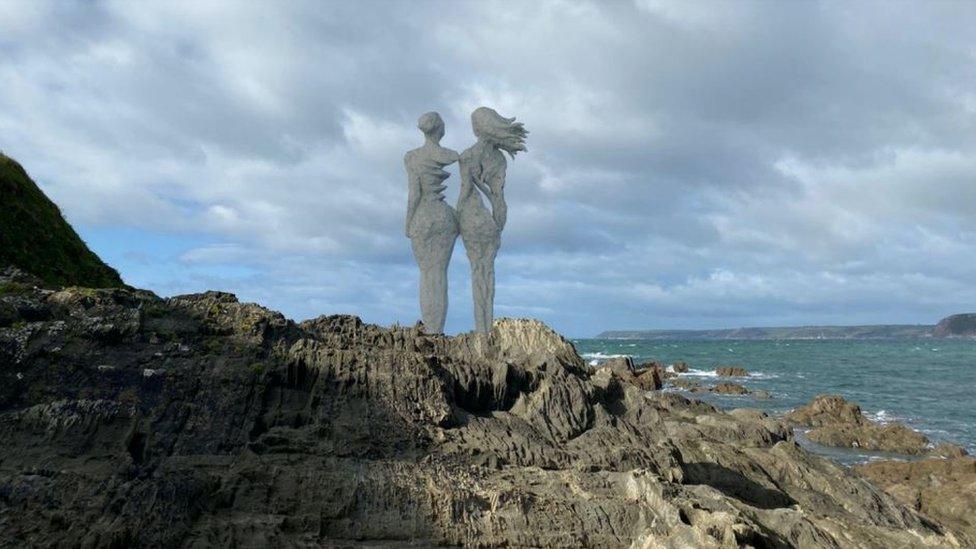
How the pirates would look perched on the rocks of Burgh Island
Plans for a statue of two female pirates thought to have been lovers have been rejected by a parish council.
The statue of 18th Century pirates Anne Bonny and Mary Read is proposed for beauty spot Burgh Island in south Devon.
The pirate pair, cast in concrete and looking out to sea, would enhance the area, say supporters.
Others say a tribute to the local pilchard industry or "a fisherman's wife" would be more appropriate.
The statue, by sculptor Amanda Cotton, celebrates the pair who broke gender boundaries and, according to historians, became lovers after they pitched up on a pirate ship., external
Bigbury Parish Council, which had 13 objections and three messages of support, external about the plan, voted unanimously against it on Monday.

Anne Bonny and Mary Read: A statue remembering the pair is stirring up controversy in Bigbury
Island owner Giles Fuchs said he thought the 2.5m (8.2ft) tall statue on the island's rocky shoreline was a "brilliant idea".
The island was "notorious for smuggling and we have our own Pirates Day, so it seemed like a no-brainer", he said.
The statue, proposed by London-based marketing agency The Producers, would have found more support if it had been linked to the former pilchard fishing industry in the area, said councillor Cathy Case.
"I'm not convinced it's the right thing for the island," she said.
Councillor Sharon Smith agreed: "It would be better to have a fisherman's wife looking out to sea.
"It does not belong in this area."


Burgh Island owner Giles Fuchs said the plan was a "brilliant idea"
Anne Bonny and Mary Read: "Inseparable"
The pair were exceptional for their time said Dr Rebecca Simon, an expert on the history of piracy.
Seafarers were almost always men in the late 17th and early 18th Centuries because women were not generally even allowed on ships; they were thought to be bad luck and not up to the physical challenges.
Mary Read, born in England in 1685, dressed as a boy to seek work on board ship, and ended up being captured by the notorious pirate Jack Rackham.
Along with Anne Bonny, born in Ireland in 1697, she became part of Rackham's crew.
"They were inseparable and they were most likely lovers," said Dr Simon.
She had been "surprised" to hear of the statue but she was "pleased the two of them are getting attention".
Read and Bonny were both captured and sentenced to death in Jamaica, although their sentences are thought to have been stayed until they gave birth.

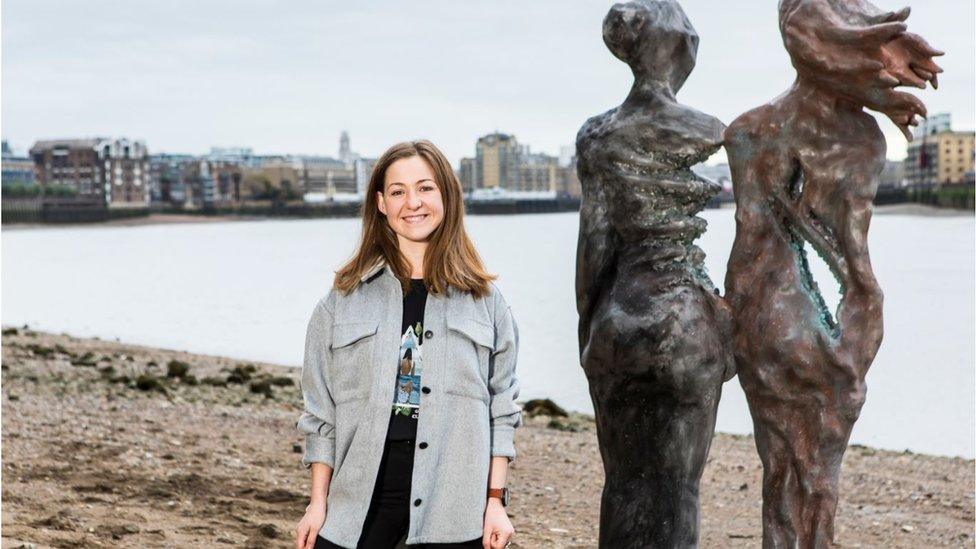
Sculptor Amanda Cotton: Burgh Island a "perfect home" for the statue
Ms Cotton said Burgh Island was an "obvious choice and a perfect home" for the statue.
Little was known about Mary and Anne so the statue would "bring that rich history to the island" and be a "visual reminder of the hidden voices of women".
"I wanted to make it sure it complemented the surroundings rather than took away from it," she said.
A final decision will be made by South Hams District Council at a later date.

Follow BBC South on Facebook, external, Twitter, external, or Instagram, external. Send your story ideas to south.newsonline@bbc.co.uk, external.
Related topics
- Published2 July 2020
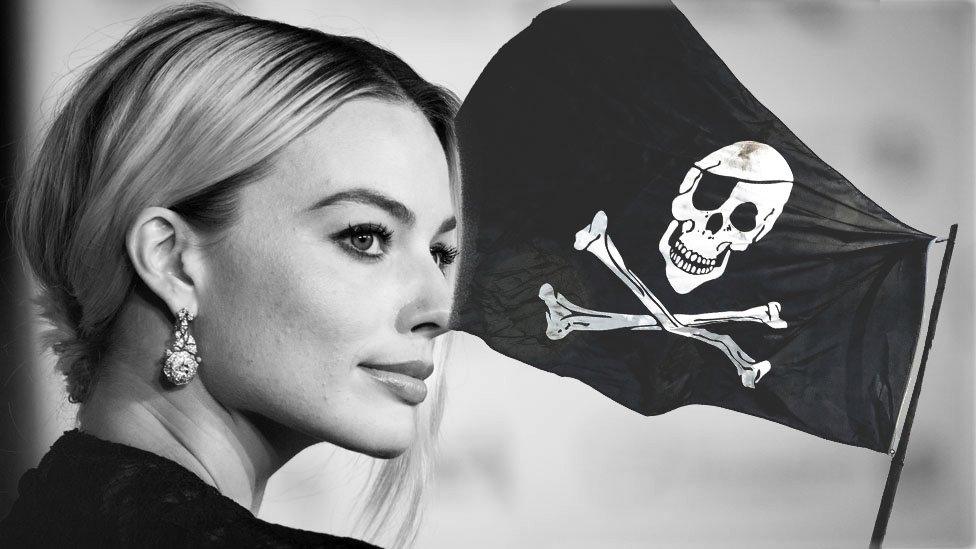
- Published13 June 2017
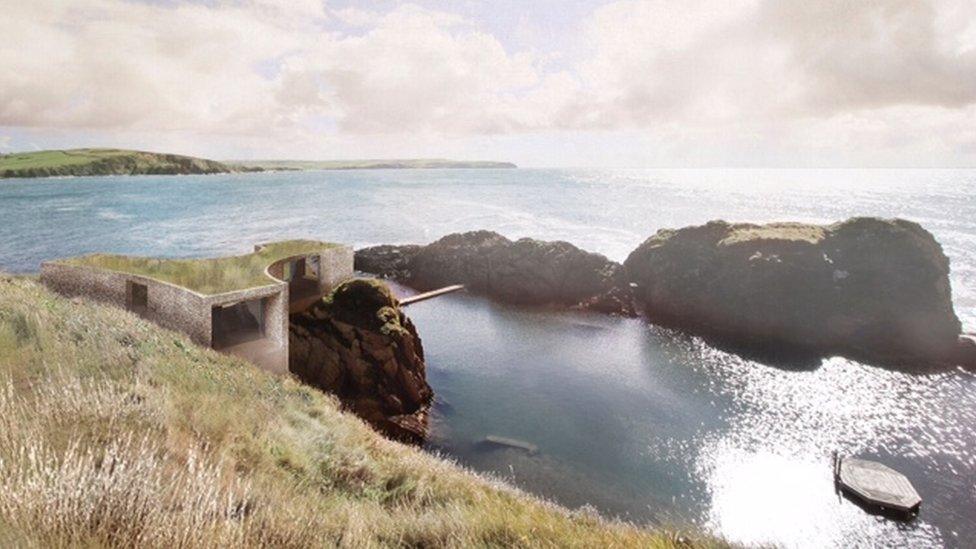
- Published11 February 2015
